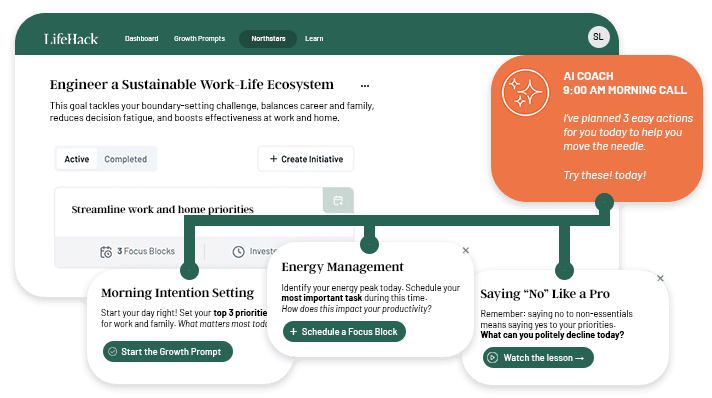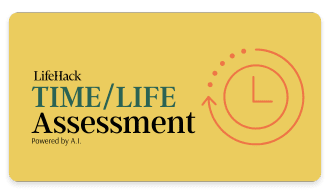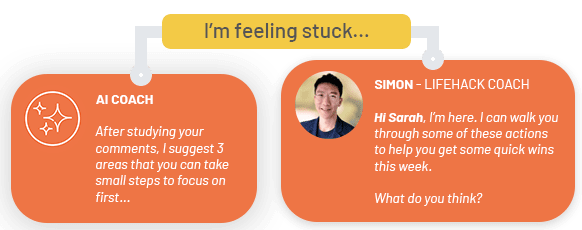In the bustling heart of tech, where new ideas sprout faster than we can tend to them, Intercom—a messaging software company—found itself at a crossroads. Sean McBride, a product manager at Intercom, along with his team, rifled through a buffet of prioritization models, trying to find the one that would best serve their unique challenges. And while these pre-existing models offered insights, none truly resonated with the precise needs of Intercom’s ever-expanding universe of project ideas.
So, what does a company do when it’s caught between a rock and a hard place? It innovates.
McBride and his team weren’t about to let existing models hold them back. They rolled up their sleeves and carved out their own….
Enter the RICE prioritization model—a fresh, pragmatic approach that melds four clear-cut factors: reach, impact, confidence, and effort.
By devising a formula that churned these elements together, the team birthed a tool that spat out a clear, concise score for any project idea thrown its way. No more second-guessing. No more “what if?” Just a straight-up, objective system to guide their product roadmap. And guess what? This wasn’t just a makeshift tool—it dramatically refined Intercom’s decision-making prowess.
Stripped down to its core, RICE is a beacon for product managers navigating the foggy waters of product roadmaps. It’s a straightforward framework, yet profound in its application, helping teams pinpoint which projects deserve the limelight based on four pivotal criteria. If you’ve ever felt overwhelmed by the tidal wave of tasks demanding your attention, RICE might just be your lifesaver.
Now, let’s uncover the heart of the RICE model and learn how you too can wield it in your arena.
Table of Contents
The 4 Factors of the RICE Prioritization Model
RICE stands as a compass, directing you through the storm of decisions with its four cardinal points:
Reach
Here’s where we step back from our personal inclinations, putting ourselves in the shoes of the users.
Reach asks a critical question: how many people will this project resonate with over a defined period? For example, for my team at LifeHack, this might translate to “how many members will this project impact over a single quarter?”.
The key? Concrete numbers. No magic, no guessing—reach is framed in terms of people or events per time period, be it “customers per quarter” or “sales per month”. It calls for data-driven evidence, not hopeful conjectures pulled from the ether.
Impact
Impact is the muscle of the project, the force it exerts on individual users. Will it nudge the needle, and if so, how far?
For one team, it might be quantified as “how much will this project increase the conversion rate when a user subscribes to it?”
Exact measurement can be elusive, so Intercom sets a scale
- 3 for “massive impact”
- 2 for “high”
- 1 for “medium”
It’s a system that, while not perfect, avoids leaving us stranded in the swamp of subjective guesswork.
Confidence
Amid the sparkle of ambitious ideas, confidence acts as the reality check. It begs the question: how certain are you, really, about these estimates? This factor is the reins that slow you down when you’re charging ahead with little more than high hopes.
Confidence is expressed as a percentage. Simple choices keep the process nimble and avoid decision quagmire:
- 100% for “high confidence”
- 80% for “medium”
- 50% for “low”
It’s a moment for candid reflection: how solid is the ground you’re building on?
Effort
Effort is the resource toll: the time and energy that you and your team will need to pour into this project. It’s counted in “person-months”, a rough estimate of the work one team member can do in a month.
Here, whole numbers (or 0.5 for lighter loads) suffice. In RICE, more effort doesn’t earn a gold star—it actually dilutes the score, reminding you that speed and agility are virtues.
Unlock Your Time Potential: From Chaos to Control
Discover how to reclaim your time and transform chaos into productivity with our comprehensive Time/Life Assessment.
If you're ready to take control of your time and boost your efficiency, don't miss this opportunity to get a personalized analysis and action plan.

In a world where ‘more’ is often seen as ‘better’, RICE flips the script. It’s the quiet but steadfast guide that whispers,
“Choose wisely. Make it count.”
How to Use the RICE Model (Step-by-Step Guide)
The RICE model isn’t a complex riddle—it’s a compass, designed to steer you effectively through the waves of projects and features..
1. Map Out the Terrain
First, jot down a list of the potential new product features waiting to be prioritized. This isn’t limited to the new and shiny; it includes the stalwarts of your backlog too.
2. Assign the Scores
Estimate:
- Reach. For each venture on your list, gauge how many users will feel its presence. A specific time frame can keep this tidy—like users per month. If revenue sings to you, MRR is a worthy number to serenade.
- Impact. Foresee the ripples each project could make on user satisfaction or revenue. Your scale might read ‘minimal’ at the low end and crescendo to ‘massive’. Tune this scale to the melodies of your customer feedback.
- Effort. Sum up the hours or months your team needs to invest across all fronts—development, design, testing.
- Confidence. Measuring the strength of your convictions, are these estimates rock solid (100%) or more akin to throwing darts in the dark (<50%)?
3. Crunch Those Numbers
With your scores set, apply the formula for each project or feature:
RICE Score = (Reach * Impact * Confidence) / Effort
To help you do the math, I’ve crafted a Notion Template in which you only need to plug in those estimates.
4. Arrange the Projects
Arrange the projects or features by their RICE scores, highest first. Normally, these high flyers are the treasures you’re hunting—they get built first.
5. Huddle with Your Crew
Lay the scores and your proposed route on the table for your team and stakeholders to see. Here’s where the debate heats up, where you untangle discrepancies, tackle concerns, or unearth new insights that could sway the journey.
6. Tweak and Revise
Consistently revisit and retune your RICE scores as fresh intel rolls in or as your company’s flag is hoisted in new directions. This ensures your team’s energy sails in harmony with your ever-evolving goals and that your treasure—time—is spent wisely.
Case Study
Our team had a slew of potential projects, ranging from redesigning our website to developing a new course and launching an email newsletter series. With limited resources, we needed a rational way to decide what to tackle first. So we used the RICE model to help us prioritize:
1. Identifying Projects
Our options: website redesign, new online course development, and email newsletter series launch.
2. Defining the Factors
We adapted Reach, Impact, Confidence, and Effort to LifeHack’s goals—namely, increasing user engagement and course enrollments.
3. Scoring Each Factor
For the website redesign:
- Reach: high—impacting 95% of our users
- Impact: high (3x), expecting improved user experience and course sign-ups
- Confidence: 85% Confident in these estimates
- Effort: pegged at 2 person-months.
For the new online course:
- Reach: 60% of our existing user base, as per previous course enrollment rates
- Impact: high (3x), expecting it to boost LifeHack’s reputation and revenue
- Confidence: 80%
- Effort: 3 person-months.
For the email newsletter series:
- Reach: 70% of our subscribers
- Impact: high (3x), believing it would foster user loyalty and encourage course sign-ups
- Confidence: 90% Confident in these estimates
- Effort: 2 person-months.
4. Calculating RICE Scores
After the math, the website redesign had the highest RICE score, suggesting it was the most efficient way to achieve impactful results.
So our project rankings are:
- Website Redesign
- Email Newsletter Series
- New Online Course Development
5. Check with the Team and Adjust When Necessary
I shared these rankings with our team and stakeholders. We had a discussion, with some unexpected insights from our customer support team, who noted frequent user requests for a new course.
Given this new feedback, we decided to re-evaluate the Reach and Confidence factors for the new online course, which moved it to the second of our priority list.
Bottom Line
The RICE model is your compass, turning endless options into a clear path. It provides a systematic approach, helping you answer the pivotal question, ‘what comes next?’ with data, not just gut feeling. It’s about aligning your team’s efforts with impactful projects, justified by transparent, quantifiable criteria.
As your goals evolve, RICE adapts. It encourages regular re-evaluation, ensuring your team’s focus stays sharp and relevant.
With RICE in hand, you can set sail purposefully towards meaningful impact.
Ready for a Goal Breakthrough? Unlock Your Personalized Strategy

Experience the power of a strategy tailored just for you.
Our personalized system provides:
- Custom-crafted action steps based on your unique situation
- Insights tailored to your specific challenges and strengths
- A personalized roadmap to turn your goals into reality
Tailored recommendations powered by smart analysis
















































